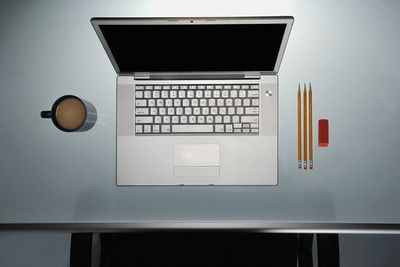Difference between revisions of "Draft:PC laptop backup"
| Line 10: | Line 10: | ||
Everyone should back up any school-related and personal documents, spreadsheets, presentations, and media stored on their laptop's hard drive. Depending on the applications you use, some of you may need to back up application-specific files. Listed below are articles covering these required and optional backup tasks for PC users: | Everyone should back up any school-related and personal documents, spreadsheets, presentations, and media stored on their laptop's hard drive. Depending on the applications you use, some of you may need to back up application-specific files. Listed below are articles covering these required and optional backup tasks for PC users: | ||
===Everyone - Back up your school-related and personal files=== | ===Everyone - Back up your school-related and personal files=== | ||
| − | <i class="fa fa-check-square-o"></i> [[Backing up files on your PC|Backing up your personal files on | + | <i class="fa fa-check-square-o"></i> [[Backing up files on your PC|Backing up your school related and personal files on a PC laptop]] |
===Optional - Back up application-specific files yourself as needed=== | ===Optional - Back up application-specific files yourself as needed=== | ||
Revision as of 17:23, 2 June 2016
About this article
This article provides a checklist of the required and optional tasks involved in backing up personal and school-related files saved on the Windows-based, HP EliteBook provided through the E-Warrior Digital Life and Learning Program. Use this checklist as part of your normal backup routine or to prepare for a laptop exchange or re-imaging. It is intended for both students and employees.
Frequently asked questions
Why do you have to back your files up manually? Where should you store your backup files? Where can you get help? If you have questions, check our Frequently Asked Questions article for answers.
Your backup checklist
Everyone should back up any school-related and personal documents, spreadsheets, presentations, and media stored on their laptop's hard drive. Depending on the applications you use, some of you may need to back up application-specific files. Listed below are articles covering these required and optional backup tasks for PC users:
Backing up your school related and personal files on a PC laptop
Optional - Back up application-specific files yourself as needed
The following, optional backup tasks can be completed without assistance, but don't hesitate to contact TLT (tlt@winona.edu) with any questions. In each of these tasks, you copy, store, and move files to your new or re-imaged laptop:
Export your browser bookmarks and favorites (IE, Firefox, Chrome). You can export a list of your saved web addresses in your browser.
Copy your KeePass database. The encrypted database that KeePass creates is stored on your laptop and can be copied and moved.
Copy your iTunes library. Any burned music tracks, saved podcasts, and downloaded, purchased media are stored as files on your laptop.
Copy your Outlook Signature, Stationary Files or Templates. These are Signature files, Stationary or templates that you custom made in Outlook.
Copy your Outlook email archive .pst files. If you use the email archive function in Outlook to save items from your mailbox, the archive .pst file is saved on your laptop.
Copy your OneNote notebooks. Know where to store your Notebooks and how to make a copy for backup.
Copy your Techsmith Camtasia Studio projects. There are multiple folders and files on your laptop associated with your specific video capture projects.
Exporting D2L courses. If you have archived any old courses, everything is packaged into a .zip file and saved on your laptop.
Optional - Backup tasks requiring assistance
The following optional backup tasks are complex, fraught with danger, lacking in documentation, or any combination of the above. Please contact TLT (tlt@winona.edu) for assistance backing up files associated with these applications unless you're absolutely sure you know what you're doing:
Copy Windows and Office appearance and personalization settings. If you have modified Windows or Office (e.g., added fonts, signatures, words to the dictionary, macros), you may be able to save some of these modifications and restore them on your new or re-imaged laptop.
Copy your Respondus test bank databases. If you use the Respondus test authoring tool (not to be confused with Respondus Lockdown Browser), your tests and question banks are saved as .rsa files on your laptop. These Respondus files will need to be backed up and moved to your new laptop.
Copy your Adobe Presenter videos. If you use Adobe Presenter to narrate over your PowerPoint slides, there are multiple files that need to be copied into specific folders.
Copy your SPSS, SAS, and JMP databases and output files. If you use these applications to analyze data, both the datasets and output files are saved on your laptop and will need to be copied and moved to your new laptop.
Optional - Update your backup notes
If you really want to maximize your efficiency when it comes time to replace your laptop, take some notes when you do your backups:
Installed software applications. Make a list of all the applications you need to install on your new laptop (e.g., Uniface, Adobe Photoshop, SPSS, JMP).
Installed browser add-ons or extensions. Make a list of the modifications you have made to your browsers (e.g., Google Toolbar, Hangouts, Feedly, Pocket, Zotero, Diigo).
Unsupported applications
If you installed any unsupported software for school or personal use such as a password vault, a citation manager (e.g., EndNote, Reference Manager), a tax preparation tool (e.g., TurboTax), or photo gallery software, back up any related files you wish to retain. Consult your documentation to determine the location and format of these files. TLT (tlt@winona.edu) will provide limited support if you have questions, but your first line of support is the vendor.
